Nostalgia on Tuesday: A bridge history
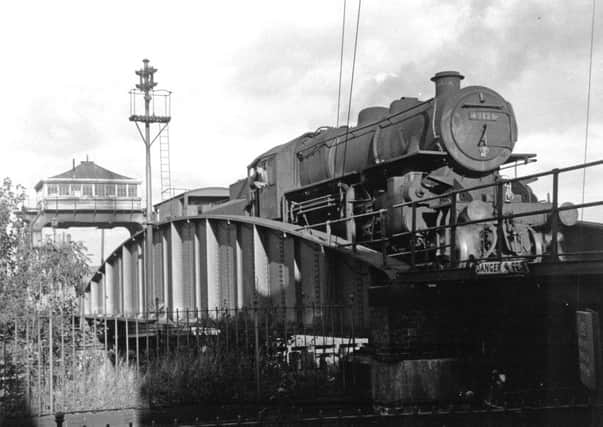

A railway – Yorkshire’s earliest main line – extending between Leeds and Selby opened to passengers in September 1834 and freight in December of the same year. The line was engineered by James Walker (1781-1862), one of the leading figures of the time. Passengers for Hull had travel along the river by steamer.
At this time the rise of Goole as a port and several other factors including proposals for railways to Bridlington and Scarborough, posed a severe threat to Hull’s shipping interests. Thus, a railway from Hull westwards was promoted by John Exley a Hull customs officer. Local support and finance was raised to push a Bill though. The Hull & Selby Railway Company was formed and authorisation was given in 1836 via an Act for the company to construct a line, to be engineered again by Walker, between Selby and Hull – the terminus adjacent to the Humber Dock.
Advertisement
Hide AdAdvertisement
Hide AdLinking the Leeds & Selby and the Selby & Hull railways across the River Ouse was a double bascule bridge – the first of two bridges. A bascule bridge is a moveable structure with a counterweight that continuously balances a span, or ‘leaf’, throughout its upward swing to provide clearance for boat traffic.
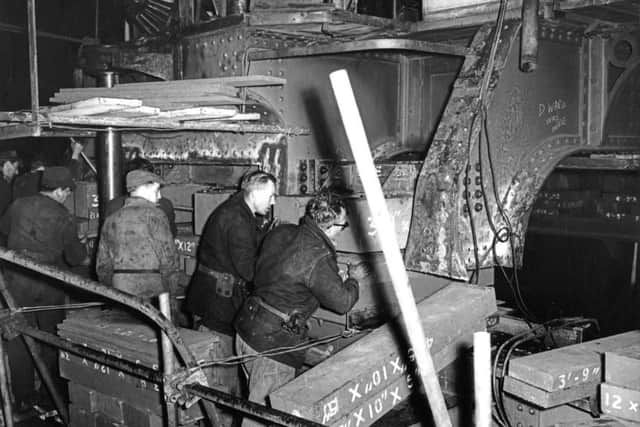

The 1836 Act required the Ouse railway bridge to have an opening arch 44 feet in width, for the passage of steamers and vessels with fixed masts. The Ouse at Selby was about 196 feet wide, and 14 feet deep, at low water; the tide rose four feet at neap tides and nine feet at spring tides. Work on the bascule bridge was begun in the autumn of 1837 and piled foundations of the Selby abutment, and the adjoining pier, were finished early in February 1838.
The opening arch was closed on October 11, 1839, and re-opened for navigation on February 13, 1840. During that period all the vessels passed through the other opening, which then formed the fixed arch of the bridge. The fixed arch, with the remainder of the ironwork, was finished by the end of March 1840.
The opening arch had two identical leaves and the weight of metal in the bridge was about 590 tons. The weight of each opening leaf, 45 feet in length, was around 93 tons and they were raised on each side by hand. Two workmen who operated them were on duty all day, being allowed only 90 seconds to complete the task.
Advertisement
Hide AdAdvertisement
Hide AdThe Hull & Selby Railway Company was leased to the York & North Midland Railway and Manchester & Leeds Railway from 1845; the North Eastern Railway nine years later.
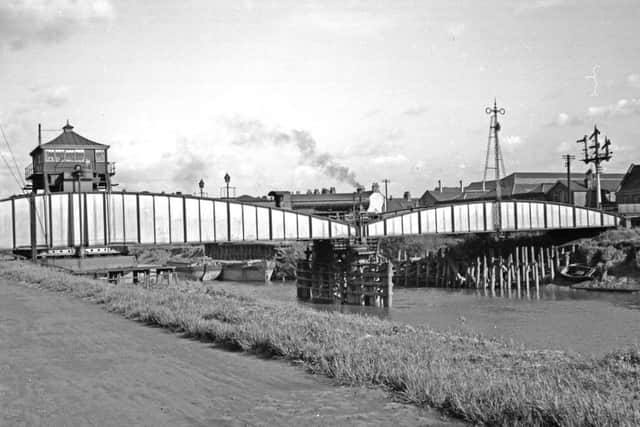

From 1871 the East Coast Main Line traversed Selby using the bascule bridge to head north or south. The ECML was constructed by three railway companies: the North British Railway from Edinburgh to Berwick-on-Tweed, completed 1846; the North Eastern Railway from Berwick-upon-Tweed to Shaftholme; and the Great Northern Railway from Shaftholme to King’s Cross, finished in 1850. When first completed, the GNR made an end-on connection at Askern with the Lancashire & Yorkshire Railway, a short section of which was used to reach the NER at Knottingley. The alteration of 1871 involved the NER opening a direct line which ran from Shaftholme to Selby and then (once over the Selby bascule bridge) direct to York.
With main line traffic using the bridge a very restrictive 15 mph speed limit was imposed, but this became unacceptable. So, in 1887 a new bridge was devised by NER engineer Thomas Elliott Harrison, the bascule one eventually being demolished.
In 1840, river traffic had priority over rail, though by the 1880s a survey revealed there were over 220 daily rail crossings of the bridge compared with only 17 lifts for boats passing by. An Act for a new bridge gave permission for rail to have priority over sail.
Advertisement
Hide AdAdvertisement
Hide AdThe new structure would open by ‘swinging’ instead of ‘lifting’ and was erected south of the original bridge, opening in February 1891. The idea was to give a much wider river opening than the previous two leaf lifts.
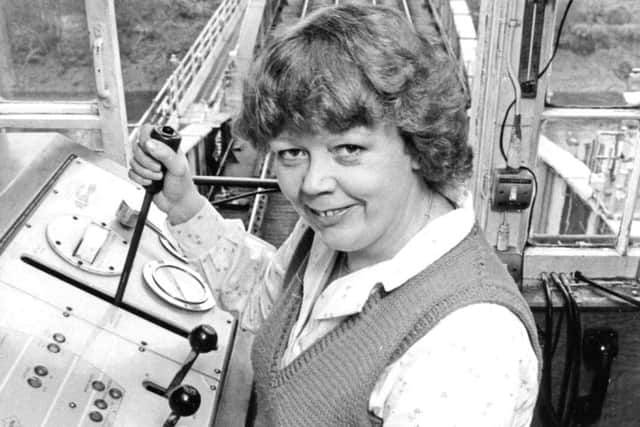

A control cabin bridged the girders of the opening span. Hydraulics, not manpower, manoeuvred the ‘swinging’ section. Power was initially provided by pressurised water until superseded by an electro-hydraulic system. The total cost for the new bridge was around £30,000.
Ownership of the Selby swing bridge and railways in the area passed to the London & North Eastern Railway in 1923, and to British Railways in 1948.
In 1960 the control cabin on the swing bridge was raised some three-and-a-half feet to facilitate a significant height above the tracks as well as being in anticipation of the ECML electrification. However, ECML traffic was taken away from Selby and the swing bridge following the main-line diversion in 1983. Yet rail traffic moving east and west continued.
Advertisement
Hide AdAdvertisement
Hide AdOn February 6, 1985 The Yorkshire Post reported that Miss Christine Moss had become the first female operator of the railway swing bridge, taking a fortnight to master the 20 switches and levers needed to open it, compared to the usual six weeks.
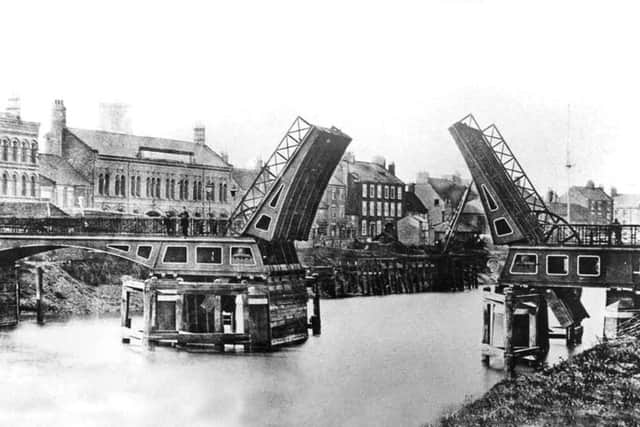

An £8m refurbishment in the latter half of 2014 was described by Network Rail as the most significant to the structure since it was built. It included steelwork repairs, replacing and strengthening sections and a new coat of paint. Work on the bridge’s hydraulic system was undertaken and the track running across the bridge replaced.